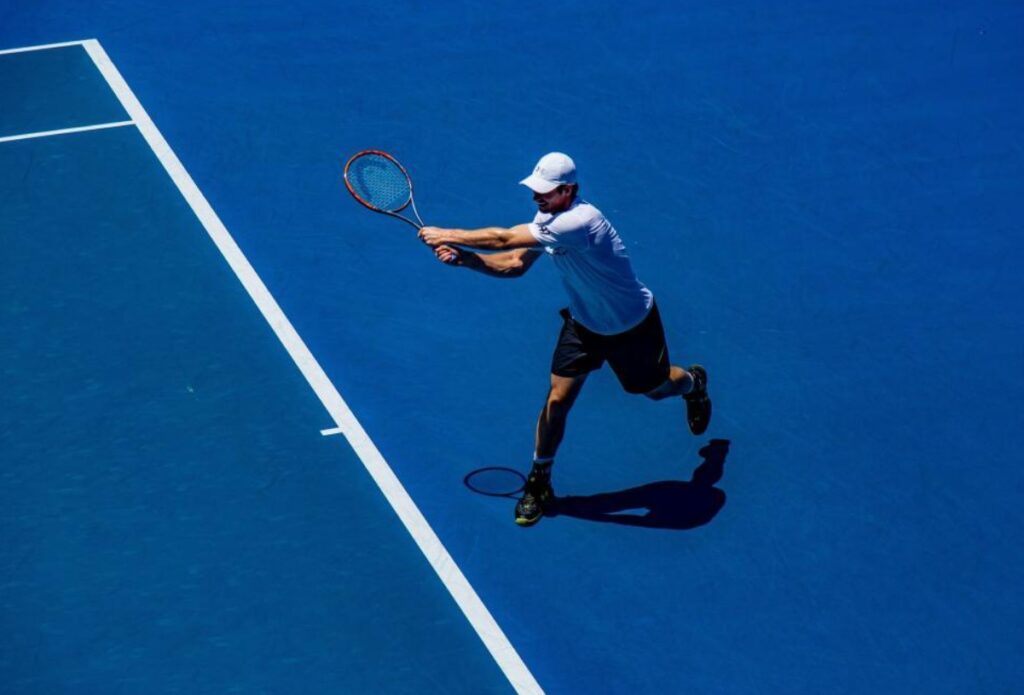Photo by Freerange Stock, CC by 1.0
Tennis has always been a traditional sport, but it’s steadily moved with the times as well. Players no longer play with wooden racquets, automated systems replacing human officials. In fact, quite a lot has changed in the game, and technology is at the heart of it all.
So how has technology in tennis made the game better? Read on for a breakdown of the biggest developments, from racquets and courts through to line-calling and AI analysis.
Racquets and Courts
Let’s start with the basics: the court and racquets. Players had nothing more than wooden racquets when Wimbledon started in the 19th century. From there, tennis moved through metal designs in the 1960s and arrived at today’s graphite and carbon-fibre frames, which give players more power and control.
The steel racquet came along in 1968, and it was only the start of decades of innovation. Now manufacturers are using composites, carbon fibre and piezoelectric materials to get the most out of every racquet.
Players also use smart racquets in the modern game. These racquets are capable of measuring the force of a player’s shots and upload the data for coaches and players to study afterwards.
Tennis courts have gone through quite a makeover over the years as well. The classic grass and clay courts are still there, but hard courts have been reworked to match the demands of the modern era.
Decoturf, a mix of acrylic, silica and rubber introduced in 1978, became the long-standing choice for the US Open. Then Plexicushion arrived in 2008, bringing a softer mix of latex, rubber and plastics to the table. The Australian Open’s been using it since then.
With the right combination of materials, these courts can be set up to play faster or slower, with the bounce tailored to a tournament’s needs. Given how much the surface now influences results, it’s no surprise that tennis betting apps factor it in heavily when pricing their odds.
Artificial Intelligence
Wimbledon phased out 300 line judges from 2025, handing their duties over to artificial intelligence. After nearly a century and a half, human officials no longer determined in-or-out calls in the tournament. Automated electronic line-calling was used on all 18 courts instead.
After 147 years, Wimbledon is getting rid of its line judges in favor of AI line calling technology
— Morning Brew ☕️ (@MorningBrew) October 9, 2024
The system was tested during this year's tournament
It leaves the French Open as the only Grand Slam left using humans to make line calls pic.twitter.com/jTcdjTqLop
The US Open and Australian Open had already adopted the technology, with only the French Open being the final Grand Slam yet to make the switch.
AI has introduced a new way to coach players too. It uses movement-tracking technology to break down a player’s technique. The system looks at your key actions and positioning from uploaded videos and compares them with top players to give you personalised advice.
“If I am serving, I can compare my body movements to thousands of other players in the world or the very best player that I want to emulate,” says Lauren Pedersen, the CEO of SportAI, a company that develops AI powered analytical tools for tennis.
“If I want to be able to serve like Serena Williams, we can compare my technique versus Serena and get feedback on how I can improve, and that’s really a breakthrough in this AI technology,” she continues.
Hawk-Eye
Technology has transformed tennis equipment and training, but perhaps the biggest changes have come in officiating.
The ‘Cyclops’ machine was tennis’s first big leap into electronic officiating when it arrived in 1980. Using a line of infrared beams, it helped judge whether a serve was in or out.
It was eventually replaced in 2006 by Hawk-Eye, a system that tracks the ball’s flight and shows exactly where it landed on a digital graphic.
Hawk-Eye is the best known technology in tennis for settling line-call disputes. The 2004 US Open quarterfinal between Serena Williams and Jennifer Capriati, where a string of incorrect calls went against Williams, prompted the authorities to develop a better automated officiating system. So, Hawk-Eye was born.
Ten cameras record 60 high-quality frames every second. A central computer receives all this data, works out the ball’s trajectory and creates a visual map that confirms whether it was in or out.
Of course, the cameras can’t capture every single millisecond of the ball’s flight, so an algorithm steps in to predict the outcome. Not everyone is sold on Hawk-Eye – with Roger Federer famously against the tech when it first came on the scene – but there’s no denying how smart it is.
Tech Bunker
Wimbledon’s ‘tech bunker’ is at the heart of its global broadcast operation. Stationed underground beside Court Two, the bunker is equipped with a wall of screens and desks filled with IBM technology.
Live data from all 18 courts is fed to a central screen, then interpreted by broadcasters to provide insights and highlights in a viewer-friendly format.
Players get plenty out of it as well. They can receive detailed video clips, packed with performance data, in as little as 20 minutes — perfect for comparing today’s effort with past matches. The system even stores stats on top players going back to 1877, so today’s stars can see how they compare with their predecessors.
3D Motion Tracking & Wearable Smart Tech
Today’s motion-tracking tools are surprisingly clever. They can analyse a player’s spine and flag potential back issues before any pain kicks in.
Although there’s some controversy around 3D motion tracking – players don’t always want their techniques analysed in public – it’s clever technology.
Wearable sensors can track posture, spine movement and the force behind each shot. All these data help spot potential injuries and show players where they can improve.
Smart wearables are now an integral part of tennis training. The PIVOT, created by Turing Sense, places sensors on key points such as the shoulders, wrists, elbows, hips and knees. It delivers real-time feedback that professionals can use to improve their injury and avoid injury.




